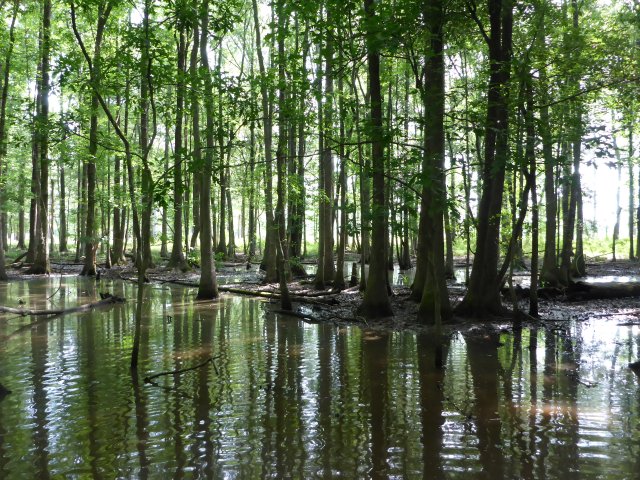Happy Wetlands Month
Published May 17, 2023

May is American Wetlands Month—a time to celebrate one of nature’s most productive ecosystems!
Wetlands are areas where water covers soil all or part of the time. EPA and our partner federal, state, tribal, local, non-profit and private sector organizations understand the vital importance of wetlands to our Nation’s ecological, economic, and social health.
Wetlands are important because they protect and improve water quality, provide fish and wildlife habitats, store floodwaters and maintain surface water flow during dry periods.
Wetlands are renowned for their ability to remove and to sequester excess nutrients, toxic substances, and sediment from the water that flows through them, helping to improve downstream water quality and the overall health of waters in our communities. Studies indicate that, depending on the type of wetland, the season, and other factors, wetlands can retain significant percentages of pollutants such as nitrates, ammonium, phosphorus, and sediment loads. Natural wetlands have also been effective in removing and in binding harmful contaminants such as pesticides, landfill leachate, dissolved chlorinated compounds, metals, and excessive storm water runoff. They are so effective at improving water quality they have been referred to as the “kidneys” of a watershed.
One of the ways EPA monitors wetlands is the National Aquatic Resource Surveys (NARS). NARS are collaborative efforts between EPA, states, and tribes designed to assess the quality of the Nation's coastal waters, lakes and reservoirs, rivers and streams, and wetlands using a statistical survey design. The NARS provide critical, groundbreaking, and nationally-consistent data on the Nation's waters.
The first NARS survey on wetlands was done in 2011 and they continue to be sampled every five years. The first National Wetland Condition Assessment (NWCA) found that:
- Nearly half of wetland area (48%) is in good condition; 32% is in poor condition and the remaining 20% is in fair condition.
- Physical disturbances to wetlands and their surrounding habitat such as compacted soil, ditching, and removal or loss of vegetation, are the most widespread problems across the country. Wetlands with high levels of compacted soil are about twice as likely to have poor plant communities.
- Nonnative plants are a problem across the country, particularly in the Interior Plains and the West. 46% of wetland area in the Interior Plains and 72% of wetland area in the West have high or very high levels of stress from nonnative plants.
The NWCA and recent studies on wetland gains and losses by the U.S. Fish and Wildlife Service suggest that more needs to be done to protect and restore our wetland resources to ensure healthier waters for future generations. EPA is working with partners to address wetland protection and restoration in the U.S. by:
- Overseeing dredge and fill permit decisions by the U.S. Army Corps of Engineers and three authorized states (Florida, Michigan, and New Jersey) under Section 404 of the Clean Water Act to ensure the terms of the permits are scientifically up-to-date and consistent with current policy, while developing guidance, information, and scientific tools for improving the management and public understanding of aquatic resource protections.
- Working with states and tribes directly and through the National Association of Wetland Managers to bolster the ability of states and tribes to manage, regulate and protect wetlands within their state and tribal lands.
- Providing technical and financial assistance to states and tribes for the development of wetland programs and tools for assessing, monitoring and addressing disturbances in wetlands.
- Working with other federal agencies on national programs to map, assess, manage, and restore wetland resources on federal lands and to help private landowners be informed stewards of their wetland resources.
- Continuing to lead the Interagency Coastal Wetlands Workgroup on developing new tools, strategies, and information for protecting and restoring wetlands in coastal watersheds.
Want to explore a wetland near you? Wetlands occur in all 50 states, so there is a good chance there is one nearby for you to visit during American Wetlands Month and throughout the year! To find a wetland near you, consult your local parks department, state natural resource agency or the United States Fish and Wildlife Service's National Wetlands Inventory.
